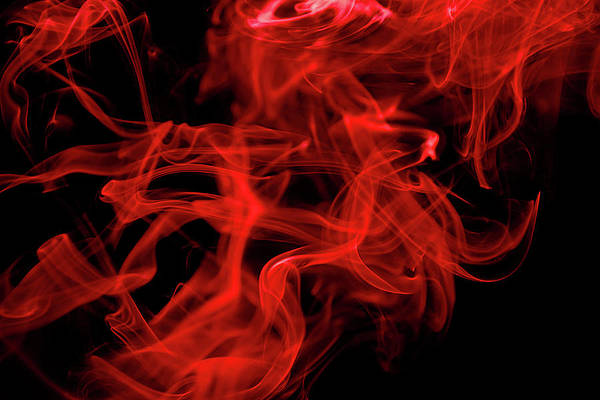Design an IIR Highpass Butterworth Filter using Bilinear Transformation Method in Scipy – Python

IIR stands for Infinite Impulse Response, It is one of the striking features of many linear-time invariant systems that are distinguished by having an impulse response h(t)/h(n) which does not become zero after some point but instead continues infinitely.
What is IIR Highpass Butterworth ?
It basically behaves just like an ordinary digital Highpass Butterworth Filter with an infinite impulse response.
The specifications are as follows:
- Pass band frequency: 2-4 kHz
- Stop band frequency: 0-500 Hz
- Pass band ripple: 3dB
- Stop band attenuation: 20 dB
- Sampling frequency: 8 kHz
- We will plot the magnitude, phase, impulse, step response of the filter.
Step-by-step Approach:
Step 1: Importing all the necessary libraries.
Python3
# import required library import numpy as np import scipy.signal as signal import matplotlib.pyplot as plt |
Step 2: Defining user-defined functions mfreqz() and impz(). mfreqz is a function for magnitude and phase plot & impz is a function for impulse and step response.
Python3
def mfreqz(b, a, Fs): # Compute frequency response of the filter # using signal.freqz function wz, hz = signal.freqz(b, a) # Calculate Magnitude from hz in dB Mag = 20*np.log10(abs(hz)) # Calculate phase angle in degree from hz Phase = np.unwrap(np.arctan2(np.imag(hz), np.real(hz)))*(180/np.pi) # Calculate frequency in Hz from wz Freq = wz*Fs/(2*np.pi) # START CODE HERE ### (≈ 1 line of code) # Plot filter magnitude and phase responses using subplot. fig = plt.figure(figsize=(10, 6)) # Plot Magnitude response sub1 = plt.subplot(2, 1, 1) sub1.plot(Freq, Mag, 'r', linewidth=2) sub1.axis([1, Fs/2, -100, 5]) sub1.set_title('Magnitude Response', fontsize=20) sub1.set_xlabel('Frequency [Hz]', fontsize=20) sub1.set_ylabel('Magnitude [dB]', fontsize=20) sub1.grid() # Plot phase angle sub2 = plt.subplot(2, 1, 2) sub2.plot(Freq, Phase, 'g', linewidth=2) sub2.set_ylabel('Phase (degree)', fontsize=20) sub2.set_xlabel(r'Frequency (Hz)', fontsize=20) sub2.set_title(r'Phase response', fontsize=20) sub2.grid() plt.subplots_adjust(hspace=0.5) fig.tight_layout() plt.show() # Define impz(b,a) to calculate impulse response # and step response of a system input: b= an array # containing numerator coefficients,a= an array containing #denominator coefficients def impz(b, a): # Define the impulse sequence of length 60 impulse = np.repeat(0., 60) impulse[0] = 1. x = np.arange(0, 60) # Compute the impulse response response = signal.lfilter(b, a, impulse) # Plot filter impulse and step response: fig = plt.figure(figsize=(10, 6)) plt.subplot(211) plt.stem(x, response, 'm', use_line_collection=True) plt.ylabel('Amplitude', fontsize=15) plt.xlabel(r'n (samples)', fontsize=15) plt.title(r'Impulse response', fontsize=15) plt.subplot(212) step = np.cumsum(response) # Compute step response of the system plt.stem(x, step, 'g', use_line_collection=True) plt.ylabel('Amplitude', fontsize=15) plt.xlabel(r'n (samples)', fontsize=15) plt.title(r'Step response', fontsize=15) plt.subplots_adjust(hspace=0.5) fig.tight_layout() plt.show() |
Step 3:Define variables with the given specifications of the filter.
Python3
# Given specification Fs = 8000 # Sampling frequency in Hz fp = 2000 # Pass band frequency in Hz fs = 500 # Stop Band frequency in Hz Ap = 3 # Pass band ripple in dB As = 20 # Stop band attenuation in dB # Compute Sampling parameter Td = 1/Fs |
Step 4:Computing the cut-off frequency
Python3
# Compute cut-off frequency in radian/sec wp = 2*np.pi*fp # pass band frequency in radian/sec ws = 2*np.pi*fs # stop band frequency in radian/sec |
Step 5: Pre-wrapping the cut-off frequency
Python3
# Prewarp the analog frequency Omega_p = (2/Td)*np.tan(wp*Td/2) # Prewarped analog passband frequency Omega_s = (2/Td)*np.tan(ws*Td/2) # Prewarped analog stopband frequency |
Step 6: Computing the Butterworth Filter
Python3
# Compute Butterworth filter order and cutoff frequency N, wc = signal.buttord(Omega_p, Omega_s, Ap, As, analog=True) # Print the values of order and cut-off frequency print('Order of the filter=', N) print('Cut-off frequency=', wc) |
Output:
Step 7: Design analog Butterworth filter using N and wc by signal.butter() function.
Python3
# Design analog Butterworth filter using N and # wc by signal.butter function b, a = signal.butter(N, wc, 'high', analog=True) # Perform bilinear Transformation z, p = signal.bilinear(b, a, fs=Fs) # Print numerator and denomerator coefficients # of the filter print('Numerator Coefficients:', z) print('Denominator Coefficients:', p) |
Output:
Step 8: Plotting the Magnitude & Phase Response
Python3
# Call mfreqz function to plot the # magnitude and phase response mfreqz(z, p, Fs) |
Output:
Step 9: Plotting the impulse & step response
Python3
# Call impz function to plot impulse and # step response of the filter impz(z, p) |
Output:
Below is the implementation:
Python3
# import required library import numpy as np import scipy.signal as signal import matplotlib.pyplot as plt # User defined functions mfreqz for # Magnitude & Phase Response def mfreqz(b, a, Fs): # Compute frequency response of the filter # using signal.freqz function wz, hz = signal.freqz(b, a) # Calculate Magnitude from hz in dB Mag = 20*np.log10(abs(hz)) # Calculate phase angle in degree from hz Phase = np.unwrap(np.arctan2(np.imag(hz), np.real(hz)))*(180/np.pi) # Calculate frequency in Hz from wz Freq = wz*Fs/(2*np.pi) # START CODE HERE ### (≈ 1 line of code) # Plot filter magnitude and phase responses using subplot. fig = plt.figure(figsize=(10, 6)) # Plot Magnitude response sub1 = plt.subplot(2, 1, 1) sub1.plot(Freq, Mag, 'r', linewidth=2) sub1.axis([1, Fs/2, -100, 5]) sub1.set_title('Magnitude Response', fontsize=20) sub1.set_xlabel('Frequency [Hz]', fontsize=20) sub1.set_ylabel('Magnitude [dB]', fontsize=20) sub1.grid() # Plot phase angle sub2 = plt.subplot(2, 1, 2) sub2.plot(Freq, Phase, 'g', linewidth=2) sub2.set_ylabel('Phase (degree)', fontsize=20) sub2.set_xlabel(r'Frequency (Hz)', fontsize=20) sub2.set_title(r'Phase response', fontsize=20) sub2.grid() plt.subplots_adjust(hspace=0.5) fig.tight_layout() plt.show() # Define impz(b,a) to calculate impulse # response and step response of a system # input: b= an array containing numerator # coefficients,a= an array containing #denominator coefficients def impz(b, a): # Define the impulse sequence of length 60 impulse = np.repeat(0., 60) impulse[0] = 1. x = np.arange(0, 60) # Compute the impulse response response = signal.lfilter(b, a, impulse) # Plot filter impulse and step response: fig = plt.figure(figsize=(10, 6)) plt.subplot(211) plt.stem(x, response, 'm', use_line_collection=True) plt.ylabel('Amplitude', fontsize=15) plt.xlabel(r'n (samples)', fontsize=15) plt.title(r'Impulse response', fontsize=15) plt.subplot(212) step = np.cumsum(response) # Compute step response of the system plt.stem(x, step, 'g', use_line_collection=True) plt.ylabel('Amplitude', fontsize=15) plt.xlabel(r'n (samples)', fontsize=15) plt.title(r'Step response', fontsize=15) plt.subplots_adjust(hspace=0.5) fig.tight_layout() plt.show() # Given specification Fs = 8000 # Sampling frequency in Hz fp = 2000 # Pass band frequency in Hz fs = 500 # Stop Band frequency in Hz Ap = 3 # Pass band ripple in dB As = 20 # Stop band attenuation in dB # Compute Sampling parameter Td = 1/Fs # Compute cut-off frequency in radian/sec wp = 2*np.pi*fp # pass band frequency in radian/sec ws = 2*np.pi*fs # stop band frequency in radian/sec # Prewarp the analog frequency Omega_p = (2/Td)*np.tan(wp*Td/2) # Prewarped analog passband frequency Omega_s = (2/Td)*np.tan(ws*Td/2) # Prewarped analog stopband frequency # Compute Butterworth filter order and cutoff frequency N, wc = signal.buttord(Omega_p, Omega_s, Ap, As, analog=True) # Print the values of order and cut-off frequency print('Order of the filter=', N) print('Cut-off frequency=', wc) # Design analog Butterworth filter using N and # wc by signal.butter function b, a = signal.butter(N, wc, 'high', analog=True) # Perform bilinear Transformation z, p = signal.bilinear(b, a, fs=Fs) # Print numerator and denomerator coefficients of the filter print('Numerator Coefficients:', z) print('Denominator Coefficients:', p) # Call mfreqz function to plot the magnitude # and phase response mfreqz(z, p, Fs) # Call impz function to plot impulse and step # response of the filter impz(z, p) |
Output:






